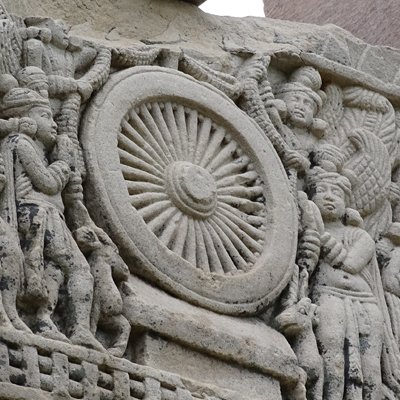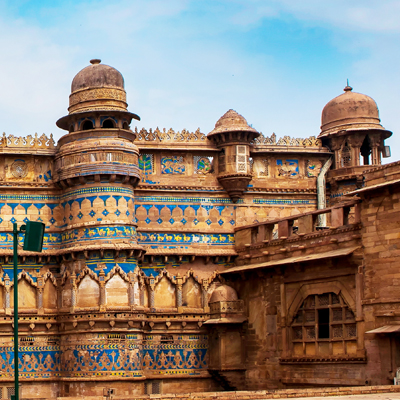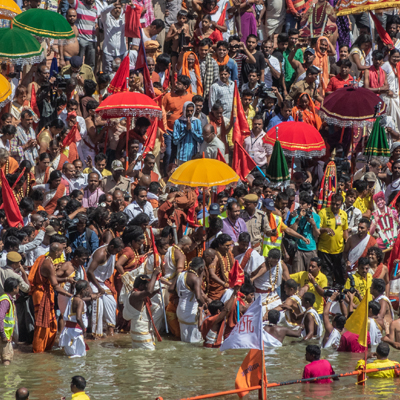Central Indian City Guide - Ujjain
One of India's holiest cities, Ujjain is steeped in spirituality and history. Situated in the Malwa area of Madhya Pradesh, it is tucked away on the eastern banks of the holy Shipra River. With a legacy spanning over two thousand years, it has become a timeless sanctuary cherished by pilgrims, history aficionados, and those in pursuit of cultural enlightenment.
Ujjain - City Guide
Once a part of the mighty Mauryan Empire, Ujjain's streets were once graced by the presence of Emperor Ashoka. The city's ancient temples, some of which have weathered the passage of nearly two millennia, are celebrated for their awe-inspiring spirituality and architectural splendour. Beyond its temples, Ujjain offers numerous other attractions that illuminate its spiritual and historical significance.
Ujjain exudes a spiritual aura that is second to none. As one of the seven sacred Hindu cities, it is graced by the presence of the Mahakaleshwar Jyotirlinga, one of the twelve revered shrines dedicated to Lord Shiva.
Ujjain is inextricably linked with the grandeur of the Kumbh Mela, a spectacle that ranks among the world's largest religious gatherings. Every twelve years, the Simhastha Kumbh Mela beckons millions of pilgrims and tourists to Ujjain. Here, they engage in sacred river baths in the holy Shipra, immersing themselves in a meditative and deeply ecstatic atmosphere.
Whether you seek spiritual enlightenment or a deeper understanding of India's rich heritage, Ujjain extends a warm and open-hearted welcome to all.
Major Attractions:
- Mahakaleshwar Temple.
- Kal Bhairav Temple.
- Ram Mandir Ghat.
- Kumbh Mela.
- Harsiddhi Temple.
- Kaliadeh Palace.
- ISKCON Ujjain Temple.
- Pir Matsyendranath.
- Jantar Mandir.
- Birla Mandir.
- Bade Ganeshji ka Mandir.
- Chaubis Khamba Temple.
- Bhartrihari Caves.
- Ram Mandir.
- Mangalnath Temple.
- Vikram University and Park.
- Sandipani Ashram.
- Gadkalika Temple.
- Gomti Kund.
- Shani Mandir.
- WWF Water Park and Resort.
Climatic Condition:
Ujjain experiences a subtropical climate. The weather in the winter season (October to March) is pleasant with a touch of coolness in the air, making it ideal for sightseeing and outdoor adventures. The summer season (April to June) in Ujjain is hot, dry, and sultry. This period is less favourable for visiting the city, but if you do, be prepared with a scarf, sunscreen, sunglasses, cap or umbrella, lightweight cotton clothing, and stay well-hydrated. To make the most of your summer visit, it's advisable to explore the city during the early mornings or late evenings when the weather is more pleasant and enjoyable. The Monsoon season (July to September) bring moderate to heavy rainfall in Ujjain. The cooler temperatures and refreshing showers enhance the city's natural beauty but it can limit the outdoor activities.
Best time to visit:
October to March.
Things to Do:
- Attend the Bhasma Aarti.
- Partake in the Holy Dip.
- Explore Historical Sites.
- Savour Local Cuisine.
- Shopping.
- Sightseeing.
How to reach:
By Air:Devi Ahilya Bai Holkar Airport in Indore is the nearest airport to Ujjain, situated approximately 56 Km away. Buses and cabs are easily available from the airport to Ujjain.
By Train:Ujjain Junction is the nearest railway station and is well-connected to major cities in India. Buses and cabs are easily available from the railway station to Ujjain.
By Road:Ujjain has a well-maintained road network, and you can easily reach the city by bus or car.
FAQ:
1.What is Ujjain Famous For?
Ujjain is renowned for its religious significance, especially as one of the seven holiest cities in Hinduism and for hosting the Kumbh Mela, a major pilgrimage and festival. It's also famous for its historical and cultural heritage, including ancient temples and monuments.
2.How Many Days Are Enough to Explore Ujjain?
You will require 1 to 2 days to explore the city's best attractions and experience its cultural and spiritual heritage.
3.What Are The Major Religious Festivals Celebrated in Ujjain?
The Kumbh Mela, Maha Shivratri, and Navratri are the most celebrated religious festivals in Ujjain.
4.Do We Have To Book In Advance To Attend Bhasma Aarti at Shri Mahakaleshwar Mandir in Ujjain?
Yes, prior bookings are required to attend Bhasma Aarti at Shri Mahakaleshwar Mandir in Ujjain. This sacred aarti ceremony takes place from 4.00 am to 6.00 am, and there is a specific dress code: males should wear a dhoti, and females should wear a saree.
5.Can Women Attend Bhasma Aarti in Ujjain?
Yes, women are indeed allowed to attend the Bhasma Aarti at Shri Mahakaleshwar Mandir in Ujjain. However, during the Aarti, when Lord Mahakal (Lord Shiva) is anointed with ashes, the priest will inform the ladies not to look at that specific moment.




